Neom Green Hydrogen mulls next phase
23 November 2023

Neom Green Hydrogen Company (NGHC) received the first set of wind turbines for one of the two renewable energy plants that will power its integrated green hydrogen and ammonia production facility in early October.
The initial panels for the project’s solar power plant and hydrogen storage tanks are expected to arrive soon. The first air separation units, meanwhile, will be delivered in the first quarter of 2024.
“We are on track to meet our 2026 target commercial operation date, with the first ammonia production expected sometime between mid to late summer of 2026,” David Edmondson, CEO of NGHC (pictured), tells MEED.
Announced in the summer of 2020, the region’s first, and probably the world’s largest, green hydrogen and ammonia production facility reached financial close in May this year. The project required a final investment of $8.4bn.
“The decision to develop the project was made in 2019 in the strong belief that there would be a market for green hydrogen,” explains Edmondson.
“Having Air Products was certainly a major factor in that decision because of their hydrogen knowledge and experience. They already have an existing infrastructure for the production and distribution of hydrogen, including for mobility.”
The US-headquartered industrial gases firm, Saudi utility developer and investor Acwa Power and Public Investment Fund-backed Neom equally own NGHC.
The scale of the integrated project is unprecedented. It will require over 4GW of wind and solar power and 400MW of battery energy storage systems. A 190-kilometre electricity transmission grid will link these to a 2GW electrolysis plant in Neom’s Oxagon industrial city.
The plant will produce up to 600 tonnes of hydrogen daily, which will be converted into roughly 1.2 million tonnes of ammonia a year. Air Products will ship the ammonia to Europe to be cracked back to hydrogen for mobility applications.
Despite some pushback on the business model's efficiency and the feasibility of green hydrogen applications in transport and mobility, Edmondson assures MEED that years of due diligence and compliance with EU carbon intensity policies support the business case. Twenty-three banks are financing the project, he points out.
“The NGHC plant is designed to ensure that the carbon intensity of the end product will be beneath the required threshold in Europe,” he says.
Edmondson acknowledges the premium costs currently involved in a low-carbon-intensity supply chain. However, this is expected to change as companies implement their net-zero commitments and suppliers scale their production to meet rising demand.
Air Products’ key role
In addition to being the exclusive offtaker for over 30 years for the green ammonia produced at the plant, Air Products is also the project’s main engineering, procurement and construction (EPC) contractor.
The firm’s triple role as an equity investor, EPC contractor and offtaker ensures that “we keep the focus on lowest cost of green hydrogen or ammonia”, notes Edmondson.
“Despite being the EPC contractor and a major investor in NGHC, Air Products’ primary objective is to generate revenue out of selling the ammonia that they have agreed to offtake from NGHC, not through the EPC contract,” he adds.
Phase two
With construction well under way for the integrated Neom green hydrogen and ammonia project, NGHC and its shareholders are now looking at a potential second phase.
“The Neom green hydrogen project is not expected to be a single investment,” says Edmondson.
“With all the ammonia to be produced at the plant under construction already sold to Air Products, there remains an interest in looking at additional investments for both the export market as well as the local market requirements for green hydrogen.”
Neom, which aims to be carbon-free and 100 per cent powered by renewable energy, is considering alternative fuels such as green hydrogen to achieve that goal.
Potential applications include mobility, given the plan to develop a rail system and other modes of transport for Neom.
“There was no domestic demand for green hydrogen fuel when the project was originally conceived in 2019. The market is continuing to evolve and we now see a stronger business case for local supply of green hydrogen,” says Edmondson.
The next phase is envisaged to be another large-scale project addressing domestic and international demand for green hydrogen and green ammonia.
Edmondson says more serious discussions about the project’s next phase will be on the agenda in 2024.
Ongoing innovation
The groundwork for the more widespread adoption of green hydrogen in Neom and across Saudi Arabia is under way.
In 2024, Neom’s energy and water subsidiary Enowa will open the Hydrogen and Innovation Development Centre (HIDC), which aims to produce and adopt decarbonised and clean synthetic fuels in partnership with Saudi Aramco.
Initially, the NGHC project at the HIDC will gather operational data from the facility’s first 20MW electrolyser from Germany’s ThyssenKrupp Nucera, which will be used at the NGHC plant.
This will help advance Enowa’s plans with Air Products Qudra to test advanced hydrogen fuel cell-based mobility and logistics solutions at Neom.
Neom factor
As a trailblazing project, Edmondson recognises the many opportunities that Neom has provided.
“We have had excellent support from Neom on both our land and permitting requirements as we have developed the project,” he says.
“We have also benefitted from legislation that allowed the first private grid in the kingdom and were granted the first industrial licence in Saudi Arabia for a green hydrogen plant.
“Neom has certainly risen to the challenge of supporting investors to make the project a reality.”
Exclusive from Meed
-
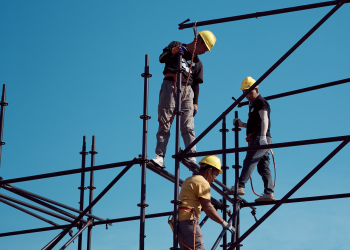 Contract award nears for Saudi Defence Ministry headquarters
Contract award nears for Saudi Defence Ministry headquarters10 December 2025
-
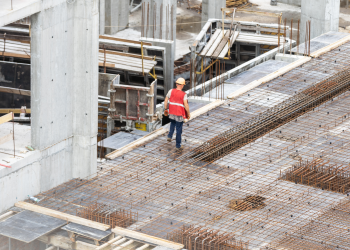 Firms prepare Riyadh government office PPP bids
Firms prepare Riyadh government office PPP bids10 December 2025
-
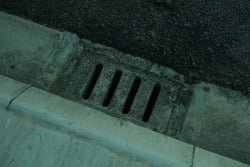 Municipality seeks consultants for Dubailand drainage project
Municipality seeks consultants for Dubailand drainage project10 December 2025
-
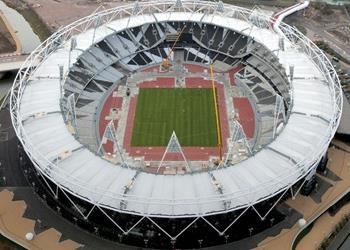 Riyadh prepares Qiddiya National Athletics Stadium tender
Riyadh prepares Qiddiya National Athletics Stadium tender9 December 2025
-
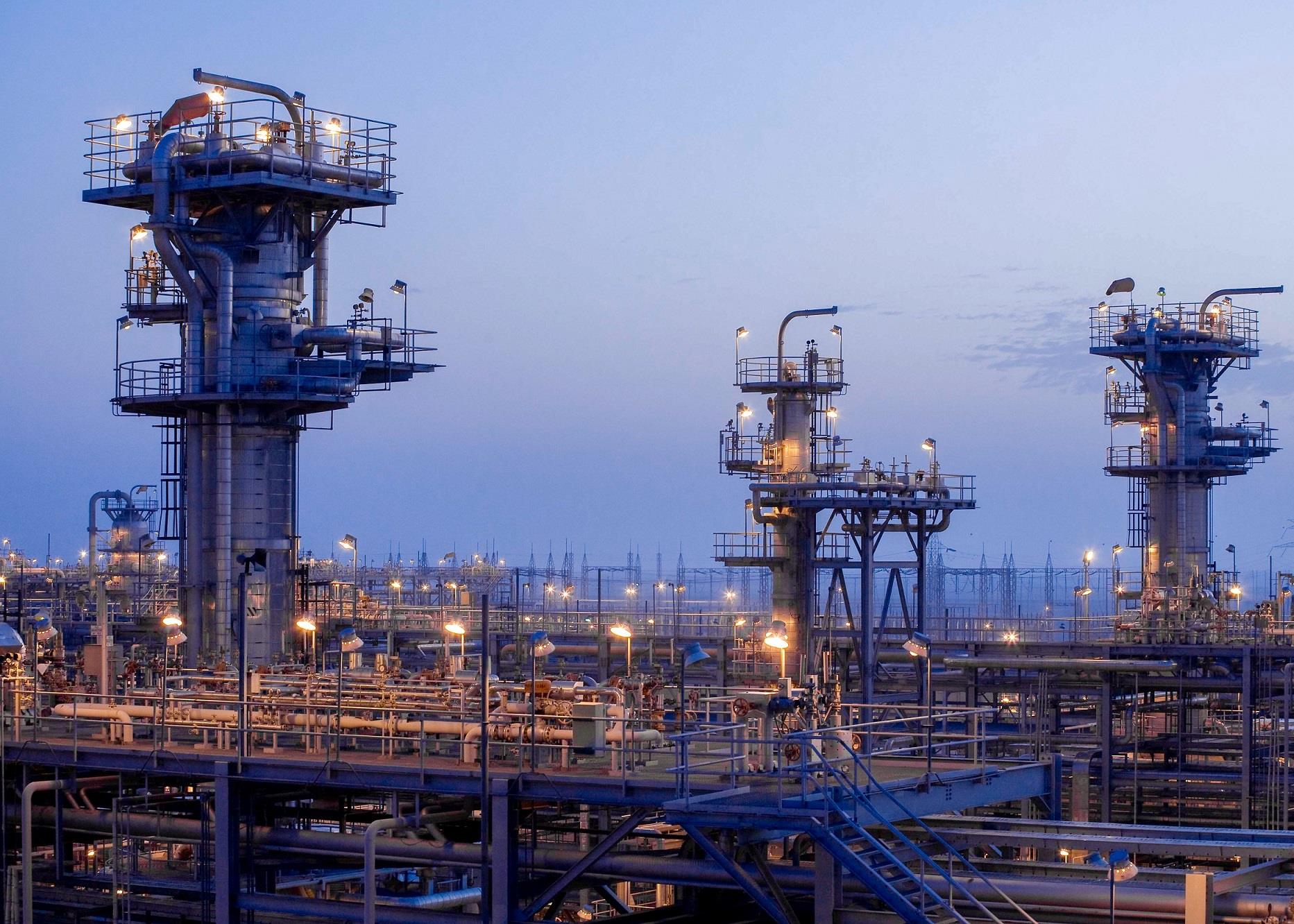 Contractors submit prices to Adnoc Gas for Ruwais NGL project
Contractors submit prices to Adnoc Gas for Ruwais NGL project9 December 2025
All of this is only 1% of what MEED.com has to offer
Subscribe now and unlock all the 153,671 articles on MEED.com
- All the latest news, data, and market intelligence across MENA at your fingerprints
- First-hand updates and inside information on projects, clients and competitors that matter to you
- 20 years' archive of information, data, and news for you to access at your convenience
- Strategize to succeed and minimise risks with timely analysis of current and future market trends

Related Articles
-
 Contract award nears for Saudi Defence Ministry headquarters
Contract award nears for Saudi Defence Ministry headquarters10 December 2025

Saudi Arabia’s Defence Ministry (MoD) is preparing to award the contract to build a new headquarters building, as part of its P-563 programme in Riyadh.
MEED understands that bid evaluation has reached advanced stages and the contract award is imminent.
The MoD issued the tender in April. The commercial bids were submitted in September, as MEED reported.
Located to the northwest of Riyadh, the P-563 programme includes the development of facilities and infrastructure to support the MoD’s broader initiatives under the kingdom’s Vision 2030 strategy.
It covers the construction of:
- A new military city featuring the MoD headquarters, support and logistics facilities, a residential and commercial community and space for future command centres
- A National Defence University with a library, conference centre and academic buildings
- A self-sustaining Joint Forces Command compound located approximately 50 kilometres from the military city
The budget for the entire programme is expected to be $10bn-$12bn.
In September 2023, MEED reported that Spain-headquartered Typsa had won two contracts for the project.
The first contract, worth $11.4m, included data management, geographic information systems management, geotechnical reporting and the preparation of the phase one final traffic report. The contract duration was 270 days from the notice to proceed.
The second contract, valued at $10.8m, involved preparing four conceptual masterplans for the P-563 site. It was set to last 255 days from the notice to proceed.
These followed a $290m consultancy contract awarded to Typsa in March of the same year. The single-award task order covered a three-year base period, with an optional two-year extension.
Typsa’s scope of work included programme management planning, communications, change and quality management and cost and schedule tracking.
It also included design requirements, codes, standards and submission requirements, programme guidance, study integration, risk analysis and management, design reviews and a programme-of-work breakdown plan.
 READ THE DECEMBER 2025 MEED BUSINESS REVIEW – click here to view PDF
READ THE DECEMBER 2025 MEED BUSINESS REVIEW – click here to view PDFProspects widen as Middle East rail projects are delivered; India’s L&T storms up MEED’s EPC contractor ranking; Manama balances growth with fiscal challenges
Distributed to senior decision-makers in the region and around the world, the December 2025 edition of MEED Business Review includes:
> AGENDA 1: Regional rail construction surges ahead> INDUSTRY REPORT 1: Larsen & Toubro climbs EPC contractor ranking> INDUSTRY REPORT 2: Chinese firms expand oil and gas presence> CONSTRUCTION: Aramco Stadium races towards completion> RENEWABLES: UAE moves ahead with $6bn solar and storage project> INTERVIEW: Engie pivots towards renewables projects> BAHRAIN MARKET FOCUS: Manama pursues reform amid strainTo see previous issues of MEED Business Review, please click herehttps://image.digitalinsightresearch.in/uploads/NewsArticle/15222401/main.gif -
 Firms prepare Riyadh government office PPP bids
Firms prepare Riyadh government office PPP bids10 December 2025

Firms are preparing to submit bids for a contract covering the construction of the Riyadh administrative office for Defence Ministry (MoD) personnel.
The clients have asked firms to submit their bids by 26 March 2026.
The MoD is developing the project in collaboration with Saudi Arabia's National Centre for Privatisation & PPP (NCP).
The project will be implemented under a design, build, finance and maintain contract with a term of 27.5 years.
The administrative complex, located in the north of Riyadh, will cover about 52,793 square metres. It will accommodate 4,500 employees and provide 3,200 parking spaces.
In September, the NCP announced the prequalified bidders for the project. These include:
- Tamasuk / Alghanim International (local/Kuwait)
- Mota-Engil / Tatweer Buildings Company / Alternative Resources Investments (Portugal/local/UAE)
- Albawani / Areic (local/local)
- Bonyan Real Estate Investment / Artar (local/local)
- FCC / IHCC (Spain/local)
- Vision Invest (local)
- Own Real Estate (local)
- Alfanar (local)
- Lamar Holding (local)
- Alyamama (local)
- El-Seif Engineering Contracting (local)
- Al-Kifah Holding Company (local)
- Alargan (Kuwait)
- Asyad (Oman)
The NCP and MoD started the expression of interest and request for qualification process for the project in May, as MEED reported.
According to an official statement, "the selected private-sector partner will be responsible for the design, construction and long-term maintenance of the facilities and supporting infrastructure, as well as coordination with stakeholders and obtaining all necessary permits".
The value of public-private partnership (PPP) contracts in Saudi Arabia has risen sharply over the past few years as the government seeks to develop projects through the private sector and diversify funding sources.
PPPs have been used in Saudi Arabia and the wider GCC region for over two decades, but have been mainly limited to power generation and water desalination plants, where the developer benefits from guaranteed take-or-pay power-purchase agreements that eliminate demand risk.
However, in the past three years, the government has successfully implemented PPPs in several new sectors, including education and healthcare, to finance, build and operate schools and hospitals. Forthcoming PPP projects include the estimated $2.5bn Asir-Jizan highway, which would be the first road concession in the GCC; the multibillion-dollar contract to develop the expansion of Abha International airport; and the Qiddiya high-speed rail scheme.
Outside the utilities sector, the NCP has more than 170 PPPs in the pipeline, covering long-term concession agreements in projects as diverse as municipal laboratories, television and radio tower infrastructure, court complexes and logistics zones.
As capital expenditure continues to increase, the NCP is expected to add dozens more PPPs to its future pipeline to relieve the state’s financial burden and to stimulate the private sector’s involvement in the local projects market.
 READ THE DECEMBER 2025 MEED BUSINESS REVIEW – click here to view PDF
READ THE DECEMBER 2025 MEED BUSINESS REVIEW – click here to view PDFProspects widen as Middle East rail projects are delivered; India’s L&T storms up MEED’s EPC contractor ranking; Manama balances growth with fiscal challenges
Distributed to senior decision-makers in the region and around the world, the December 2025 edition of MEED Business Review includes:
> AGENDA 1: Regional rail construction surges ahead> INDUSTRY REPORT 1: Larsen & Toubro climbs EPC contractor ranking> INDUSTRY REPORT 2: Chinese firms expand oil and gas presence> CONSTRUCTION: Aramco Stadium races towards completion> RENEWABLES: UAE moves ahead with $6bn solar and storage project> INTERVIEW: Engie pivots towards renewables projects> BAHRAIN MARKET FOCUS: Manama pursues reform amid strainTo see previous issues of MEED Business Review, please click herehttps://image.digitalinsightresearch.in/uploads/NewsArticle/15222216/main.jpg -
 Municipality seeks consultants for Dubailand drainage project
Municipality seeks consultants for Dubailand drainage project10 December 2025
Register for MEED’s 14-day trial access
Dubai Municipality has invited consultants to prequalify for a contract to provide supervision services on a major drainage infrastructure project serving developed communities in Dubailand.
The sewerage and stormwater drainage project, listed under the code DS-204-S1, is being procured through the government’s Sewerage and Recycled Water Projects Department (SRPD).
The bid submission deadline is 8 January.
The consultancy contract follows the issuance in November of the related construction package, DS-204-C1, for which the municipality invited contractors to prequalify.
The scope includes sewage gravity pipelines with diameters of up to 2,200mm, a sewage lift station with a capacity of three cubic metres a second, and a 1,400mm-diameter sewage rising main that will take pumped sewage from the lift station to the main sewer network.
The bid submission deadline for the construction package is also 8 January 2026.
The tenders form part of Dubai’s wider investment in sewerage expansion, including the $8bn Tasreef programme, for which several projects have moved into the execution phase in recent months.
Once completed, the Tasreef system is expected to increase Dubai’s overall drainage capacity by about 700% and provide daily stormwater treatment capacity exceeding 20 million cubic metres.
 READ THE DECEMBER 2025 MEED BUSINESS REVIEW – click here to view PDF
READ THE DECEMBER 2025 MEED BUSINESS REVIEW – click here to view PDFProspects widen as Middle East rail projects are delivered; India’s L&T storms up MEED’s EPC contractor ranking; Manama balances growth with fiscal challenges
Distributed to senior decision-makers in the region and around the world, the December 2025 edition of MEED Business Review includes:
> AGENDA 1: Regional rail construction surges ahead> INDUSTRY REPORT 1: Larsen & Toubro climbs EPC contractor ranking> INDUSTRY REPORT 2: Chinese firms expand oil and gas presence> CONSTRUCTION: Aramco Stadium races towards completion> RENEWABLES: UAE moves ahead with $6bn solar and storage project> INTERVIEW: Engie pivots towards renewables projects> BAHRAIN MARKET FOCUS: Manama pursues reform amid strainTo see previous issues of MEED Business Review, please click herehttps://image.digitalinsightresearch.in/uploads/NewsArticle/15218750/main.jpg -
 Riyadh prepares Qiddiya National Athletics Stadium tender
Riyadh prepares Qiddiya National Athletics Stadium tender9 December 2025

Register for MEED’s 14-day trial access
Saudi gigaproject developer Qiddiya Investment Company (QIC) is expected to float a tender soon for the construction of the estimated SR7bn ($1.8bn) National Athletics Stadium at its Qiddiya entertainment city development.
MEED understands that the prequalification process has reached an advanced stage and the tender for the main contract is likely to be issued within a few weeks.
The multipurpose stadium will cover an area of approximately 182,000 square metres and its design is inspired by the London Olympic Stadium.
In September, MEED exclusively reported that QIC had begun the procurement process for the kingdom’s next major sporting destination, having received expressions of interest from contractors for the project.
UK-based HOK is the project’s lead design consultant. It is supported by Canadian engineering firm WSP and Germany’s Schlaich Bergermann Partner.
UK-headquartered WT Partnership is serving as the project’s cost consultant.
The stadium will be located within the Qiddiya Sports Park cluster and is expected to be completed by 2030.
In December 2020, Saudi Arabia was selected to host the 2034 Asian Games. The 22nd edition of the event will be held in Riyadh from 29 November to 14 December 2034.
Saudi Arabia is also set to host the Asian Winter Games in 2029. In October 2022, the Trojena development at Neom, in the northwest of the country, was selected to host the ninth edition of the event.
The National Athletics Stadium is one of several major projects within the wider Qiddiya development. Others include an e-games arena, Prince Mohammed Bin Salman Stadium, a performing arts centre, a motorsports track, Dragon Ball and Six Flags theme parks and Aquarabia waterpark.
The project is a key part of Riyadh’s strategy to boost leisure tourism in the kingdom. According to UK analytics firm GlobalData, leisure tourism in Saudi Arabia has experienced significant growth in recent years.
Domestic leisure tourism trips increased to 33.76 million in 2023, up from 16.74 million in 2018. International tourist arrivals for recreational purposes increased by 600% from 2018 to 2023.
Image: Buro Happold
https://image.digitalinsightresearch.in/uploads/NewsArticle/15217660/main.jpg -
 Contractors submit prices to Adnoc Gas for Ruwais NGL project
Contractors submit prices to Adnoc Gas for Ruwais NGL project9 December 2025

Register for MEED’s 14-day trial access
Contractors have submitted commercial proposals to Adnoc Gas for engineering, procurement and construction (EPC) work as part of a design‑update competition for a project to install a fifth natural gas liquids (NGL) fractionation train at its Ruwais gas processing facility in Abu Dhabi.
The fifth NGL fractionation train will have an output capacity of 22,000 tonnes a day (t/d), or about 8 million tonnes a year.
Adnoc Gas, the natural gas processing business of Abu Dhabi National Oil Company (Adnoc Group), has adopted the design-update competition model to deliver the Ruwais NGL Train 5 project, MEED previously reported.
The design-update competition model involves the project operator selecting contractors to execute front-end engineering design (feed) work on the project. The operator selects the contractor with the most competitive feed proposal to execute EPC works on the project, while also compensating the other contestants for their work.
According to sources, contractors participating in the design-update competition for the Ruwais NGL Train 5 project submitted commercial bids for EPC works by the deadline of 8 December.
The previous deadline for price submissions was 30 November, sources said.
Adnoc Gas previously asked contractors to submit their feed technical proposals for the project in September.
In January, MEED reported that Adnoc Gas had selected the following contractors to participate in the design-update competition for the Ruwais NGL Train 5 project:
- JGC Corporation (Japan)
- Technip Energies (France)
- Tecnimont (Italy)
MEED previously reported that participants had submitted technical proposals for feed work on 6 October.
The scope of work on the Ruwais NGL Train 5 project covers the EPC of the following units:
- NGL fractionation plant with a capacity of 22,000 t/d, including NGL fractionation facilities, downstream treatment units, sulphur recovery units, products storage, loading facilities and associated utilities, flares and interconnection pipelines with existing facilities
- Two propane liquefied petroleum gas storage tanks and one paraffinic naphtha storage tank
- Buildings – a central control building, outstations, substations and plant amenities
- Electrical power connections. Power is to be sourced from the nearby Transco substation via a direct underground cable to the plot location.
Adnoc Gas requires the feed on the project to be updated based on the design of Ruwais NGL Train 4, which has an output capacity of 27,000 t/d and was commissioned in 2014.
In December 2021, MEED reported that Adnoc Gas, then operating as Adnoc Gas Processing, had awarded Indian contractor Larsen & Toubro Hydrocarbon Engineering the main contract for a project to enhance the capacity of its NGL trains 1-4 at the Ruwais complex.
ALSO READ: Adnoc Gas capex budget to rise to $28bn by 2029
Adnoc Gas business
Adnoc Group announced the creation of Adnoc Gas through the merger of its subsidiaries Adnoc Gas Processing and Adnoc LNG in November 2022. Adnoc Gas began operating as a commercial entity on 1 January 2023.
The consolidation of Adnoc’s gas processing and liquefied natural gas (LNG) operations into Adnoc Gas has created one of the world’s largest gas-processing entities, with a processing capacity of about 10 billion standard cubic feet of gas a day across eight onshore and offshore sites, which include its Asab, Bab, Bu Hasa, Habshan and Ruwais plants.
The company also owns a 3,250-kilometre (km) gas pipeline network to supply feedstock to its customers in the UAE. This sales gas pipeline network is being expanded to over 3,500km through the estimated $3bn Estidama project.
The company will also acquire its parent Adnoc Group’s 60% share in the Ruwais LNG terminal project at cost in the second half of 2028. UK energy producer BP, Japan’s Mitsui & Co, UK-based Shell and French energy producer TotalEnergies are the other shareholders in the project, holding 10% stakes each.
Adnoc Gas share sale
In February 2025, Adnoc Group completed a marketed offering of approximately 3.1 billion shares in Adnoc Gas, raising $2.8bn from the exercise.
The offering consisted of 3,070,056,880 shares, representing 4% of the issued and outstanding share capital of Adnoc Gas.
Following the marketed offering of shares, Adnoc Group continues to hold the majority 86% of shares in Adnoc Gas.
The parent entity listed 5% of Adnoc Gas’ shares on the Abu Dhabi Securities Exchange in March 2023, in an initial public offering from which it raised about $2.5bn.
Abu Dhabi National Energy Company (Taqa) owns the remaining 5% shares in Adnoc Gas.
https://image.digitalinsightresearch.in/uploads/NewsArticle/15217598/main2533.jpg

